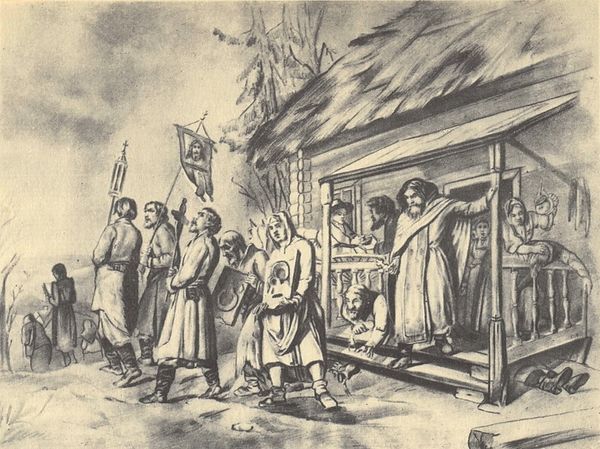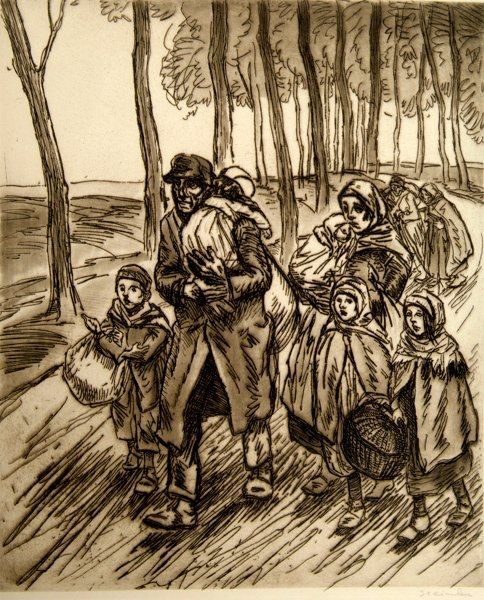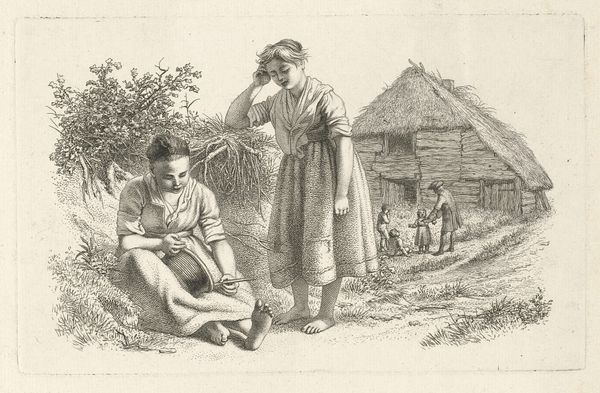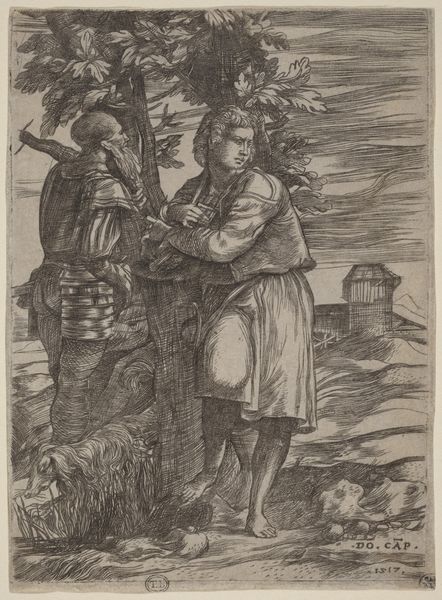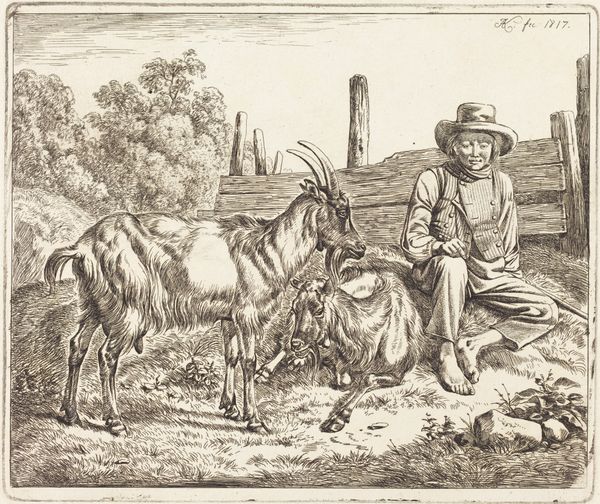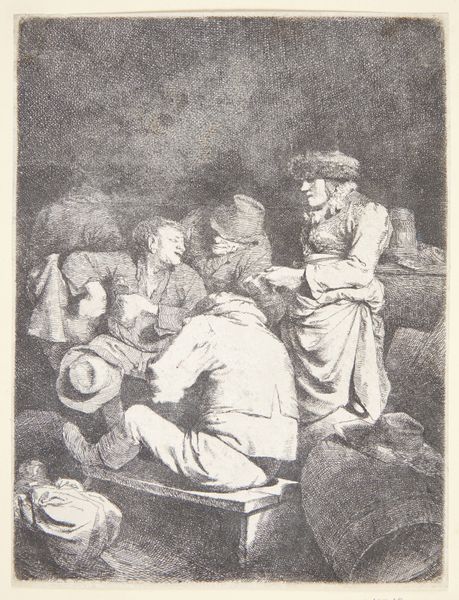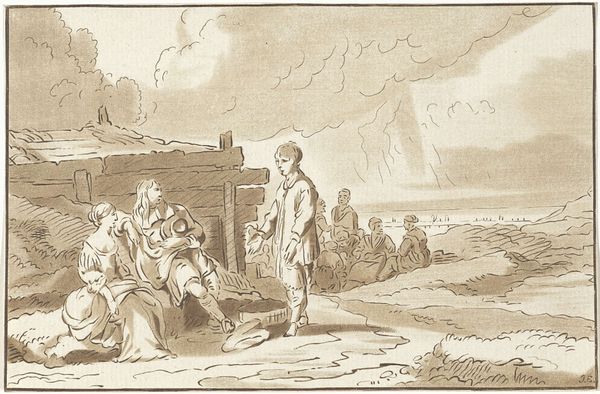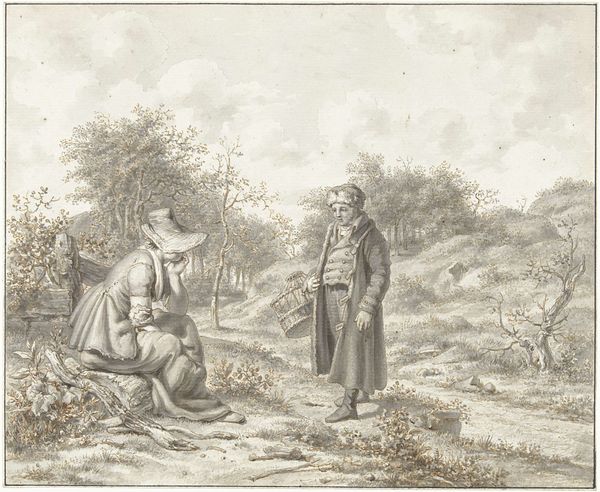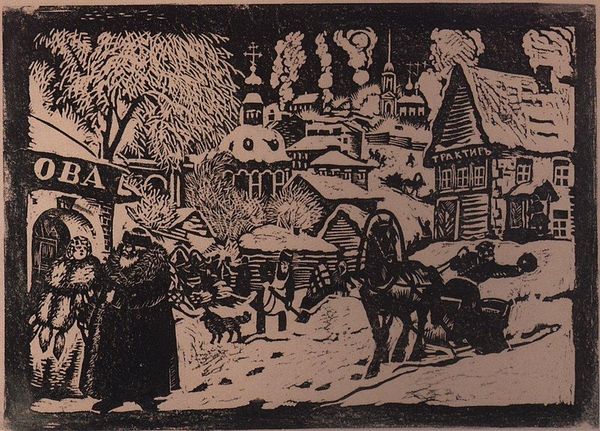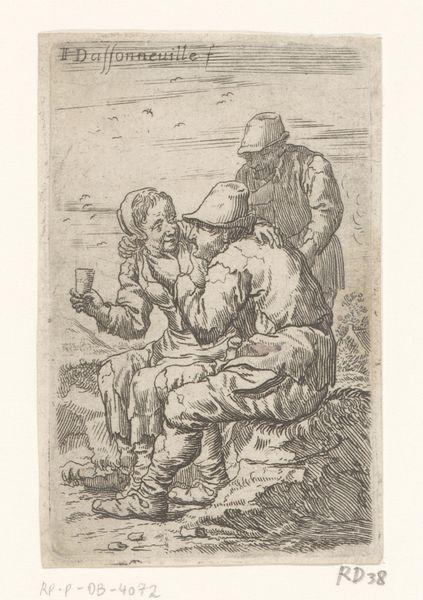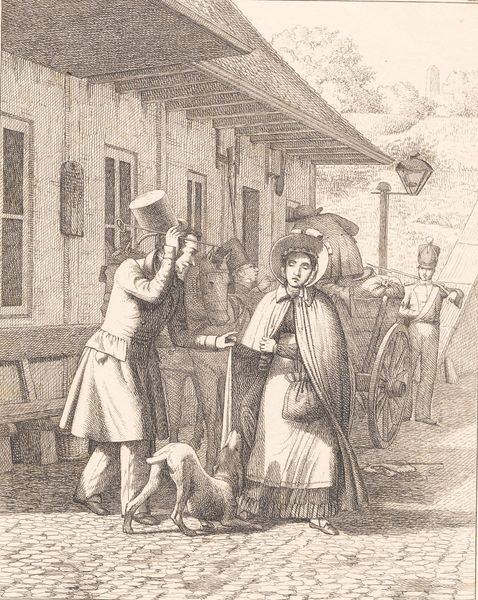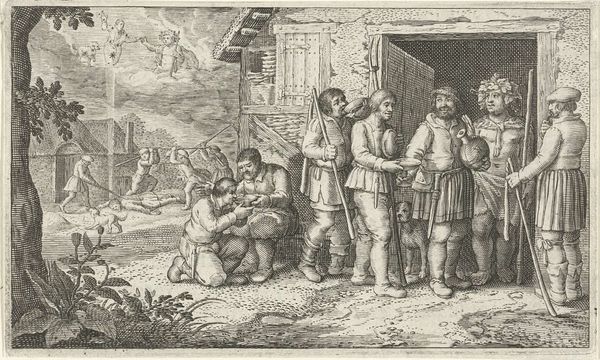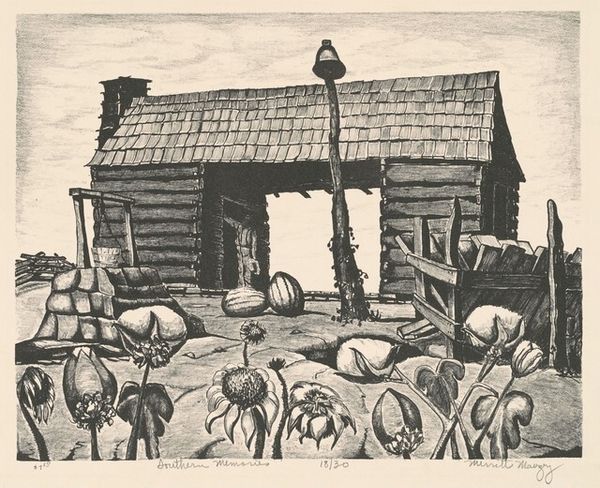
oil-paint
#
portrait
#
oil-paint
#
landscape
#
oil painting
#
naive art
#
russian-avant-garde
#
genre-painting
Dimensions: 180 x 330 cm
Copyright: Pyotr Konchalovsky,Fair Use
Curator: What a fascinating work—this is Pyotr Konchalovsky's "Novgorod. Returning from the Fair," painted in 1926 using oil paints. Editor: It evokes a strong sense of…earthiness. The color palette, the rough texture… you can almost smell the dust and horse sweat. It also speaks to the tradition of making art, showing people using resources and working on the land. Curator: Absolutely. Konchalovsky, while experimenting with avant-garde techniques, often turned to scenes of rural life. It offers a glimpse into the post-revolutionary social landscape, particularly in the context of the fairs as crucial trading points. Editor: Look at the expressions on their faces. The weight of the day, or perhaps the year, seems etched in those lines. And the materiality, so prevalent: from the coarse clothes to the wooden cart and leather reins. How accessible and readily available were these materials for the average person? This work really underscores class dynamics. Curator: Indeed. Notice how the painting serves as both a record of daily life and also speaks to broader political themes, showcasing the realities, the hardships and the quiet resolve of this populace. How does it play to the role of art? Who exactly got to depict those lives, and what were the common modes of depicting those figures? Editor: The raw texture is wonderful. It invites us to consider the artist’s labor—the application of the paint, the building up of layers, and even the conscious choice to leave brushstrokes visible. There’s a physicality here, a directness that bypasses idealized representations and centers the hard reality of manual labor. This emphasis is vital when understanding how folk aesthetics can contribute and create artwork for everyone. Curator: That tactility links this particular work of Konchalovsky to wider discourses regarding identity formation after revolutionary art programs, which are very much shaped by politics in an active reconstruction of identity after such a political turning point. Editor: Studying the means by which artworks become popular shows a society's deeper cultural biases and the dynamics of access to resources and labor. It certainly gives us a much fuller picture. Curator: I find the interplay of the intimate scale with this kind of monumental subject—people returning from a long, arduous task—particularly effective. The artist certainly allows us to ruminate on post-revolutional sentiments! Editor: Well, it's given me plenty to think about. That materiality is something that's certainly resonating today.
Comments
No comments
Be the first to comment and join the conversation on the ultimate creative platform.
